The future of work has received an avalanche of attention over the past several years from the media, academics, and policymakers. However, most discussion has been theoretical and speculative. And the challenges facing opportunity youth have largely been left out of this conversation. Given this context, the Aspen Institute Economic Opportunities Program and Aspen Institute Forum for Community Solutions, with support from the Citi Foundation, developed a practical approach and toolkit that community leaders can use to begin to learn how the future of work is playing out right now in their local economies. The toolkit includes a framework and questions to guide conversations with employers and young adults to learn from them about the nature and structure of work in specific occupations and what’s changing now; a guide to resources for conducting background labor market research to inform conversations; and sights from three organizations that pilot-tested the approach and toolkit in their communities
Companies can play an important role in making online upskilling accessible and relevant to frontline workers. Our latest report documents one partnered approach to designing and piloting an online training program for incumbent workers, led by a food service company, a civic leadership organization, and a local university in Pittsburgh, Pennsylvania. It explores how Eat’n Park partnered with Robert Morris University and the Allegheny Conference on Community Development to design and deliver digital training to frontline Eat’n Park employees. Our profile shares findings from a pilot customer service training program, focusing on the experiences of workers who participated and their managers
Good Jobs, Good Business is a comprehensive toolkit for small business owners seeking to improve job quality. The toolkit includes sections on Employee Compensation, Scheduling and Paid Leave, Hiring and Professional Development, Employee Engagement, Health Benefits, Retirement and Wealth Building, Racial Equity, and Covid-19. Each section helps users develop a business case and provides guidance on implementing new policies. This resource is designed for small business owners but can also be used by partners (including lenders and workforce development organizations) to coach businesses on job quality improvements with potential business benefits.
This paper lays out a potential path forward for “Next Gen” workforce organizations seeking to improve job quality for workers and elevate employer competitiveness. It shares the strategy, organizational culture, and field-tested practices that JVS Boston developed to engage employers in strengthening job quality and in turn more effectively meet employer and employee needs in a tight labor market.
In this article, the authors present findings from their research demonstrating the benefits of profit-sharing and worker ownership models for both employees and businesses. They describe different models of profit-sharing and also cite past studies documenting a range of benefits for employees participating in these businesses, including higher wages and better benefits compared to peers. This article has application for business leaders exploring different job quality strategies as well as policy and economic development leaders positioned to expand the use of profit-sharing models.
This fact sheet displays the disproportionate effect technological change may have on Black workers and presents potential benefits that effective training programs could have on Black communities. This resource is useful for practitioners seeking to design training programs that center equity.
This report shares how Goodwill San Diego adapted its culture and operations to enhance job quality and business performance in response to a mandated local minimum wage increase, including developing transparent career pathways, investing in leadership development at all levels, and building a culture of learning and development. Businesses and service providers seeking to get ahead of minimum wage legislation and improve job quality can learn from the practices outlined in this profile.
This report highlights pressing racial disparities in the US workforce and education systems and offers recommendations for advancing racial equity within state and federal workforce policies. This publication is primarily geared towards workforce development professionals, as training and education can help address employment, income, and wealth disparities when paired with broader job quality efforts.
This “train-the-trainer” curriculum is designed for workforce development staff to educate clients about their rights as workers and strategies for protecting those rights. Units include wage and hour regulations, hiring and termination, leaves of absence, discrimination on the job, worker health and safety, and worker organizing. Although the curriculum highlights regulations that are specific to Chicago, the curriculum can serve as a model for others across the country. In addition to workforce development practitioners, worker advocacy professionals may also find this curriculum useful.
Manufacturers looking to improve productivity and efficiency often turn to Manufacturing Extension Partnerships (MEPs), public-private partnerships supported by the US Department of Commerce that provide consulting services to support their growth and competitiveness. These partnerships often focus on implementing lean manufacturing strategies to cut waste and eliminate production bottlenecks. But what if they also adopted people strategies, focusing on job quality alongside process and product strategies to help businesses solve their problems?
Illinois Manufacturing Excellence Center (IMEC) took just this approach with its Genesis initiative, working with manufacturers to implement “good jobs” strategies to improve workforce engagement, productivity, and stability, alongside process and product improvements. Launched in 2014, with the support of the Chicagoland Workforce Funder Alliance (CWFA), the Genesis initiative is based on the premise that workforce practices are central to a firm’s operations, productivity, and competitiveness. Through Genesis, IMEC fine-tuned a strategic planning approach that helped companies explore process- and product-related challenges that were deeply interwoven with people-related challenges.
This report details the process IMEC followed to implement Genesis, how it worked with manufacturers, results from the initiative, and key considerations for other MEPs, funders, and policymakers looking to learn more about this approach and how they can support similar work in their communities.
